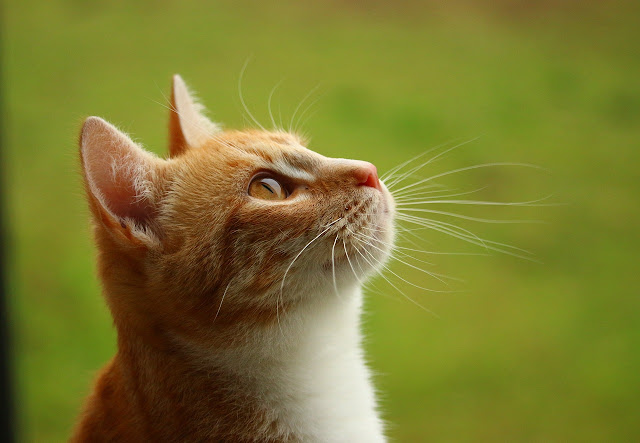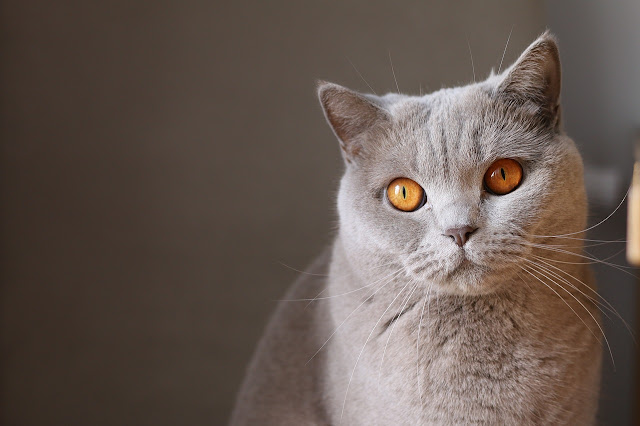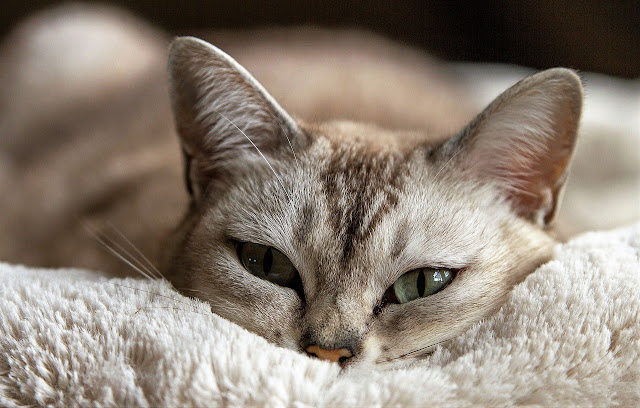Many of us have cats at home and we love them to bits. However, it is not always easy to understand what they are thinking or feeling. This can sometimes lead to frictions. so first you need to know How to read cat body language.
How to read cat body language
1. Cat's tail
The position of a cat's tail is a good indicator of what he/she is feeling. Erect tail: the cat is alert and watchful. Un-erect tail: the cat is relaxed and calm. In between two positions, it can also mean that the cat is angry or annoyed.
2. Body position
A cat who is frightened or angry will arch his back, erect all the hair on his body and stay low to the ground. The tail will also be in a vertical position at this time. If you see your pet doing that then it might be best to stay away from him/her for a while.
3. Head and ears
If a cat is happy, he/she will often have the head raised high with its ears erect. If it is lying down, you can see that from their body position as well. In this case, if your cat's tail is moving from side to side then it means that they are very content and happy.
4. Ears
Cats who are alert and wary will have their ears erect. Cats who are relaxed will often hold their ears slightly tilted forward or to the side. If your cat's ears are completely flattened against its head, it is likely that he/she is very angry or frightened.
5. Eyes
Cats' eyes can tell you what they are thinking. Dilated pupils indicate that the cat is excited or scared of something. Normally, cats have slit-shaped pupils. Cats who are very excited or want to play will often have round pupils instead.
6. Cheeks and whiskers
If you see your cat's cheeks puffing out, it probably means that your pet is getting ready to either play or pounce. Cats who are happy and content will often have their whiskers relaxed against the cheeks, but cats who are angry will hold them out away from the face.
7. Lip-smacking
Cat lip-smacking can be an indication of pleasure or contentment. It occurs when the cat opens his/her mouth, closes it, and then opens it again with audible smacking sounds. Some cats do this more than others so not all cats who lip-smack are completely happy or contented.
8. Narrowed eyes
If your cat narrows his/her eyes at you, it means that he/she is not really happy with something. Your cat might be preparing to get angry or ready to attack. In this case, your best bet is to stay away from the animal until he/she calms down a bit.
9. Teeth and mouth
If you see your cat's teeth and mouth, it might be a sign that they are unhappy or angry. Cats make this expression when they want to show dominance and aggression.
10. Yawning
Cats will not usually yawn in front of other cats. This can often mean that your pet is worried or anxious about something, which is why you will see them do this from time to time.
11. Forehead wrinkles
Cats will often pull their eyebrows up and wrinkle their forehead when they are angry, scared, or feel threatened in some way. This is one of the most common ways cats show aggression toward other animals or humans. The best thing you can do is remain calm around your cat at this time.
12. Whiskers
If your cat's whiskers are pushed forward instead of lying flat against his/her cheeks, then he/she is probably very unhappy or angry about something. Some people believe that cats use their whiskers to detect whether they can fit into a space or not, so if the whiskers are out, it means your cat does not feel too comfortable about the situation.
13. Swishing tail
A cat's tail will move from side to side when he/she is angry or wants to show aggression toward another animal or human being. Cats have a very subtle way of flicking their tails from one side to another, which you might not even notice.
14. Slow blinks
Cats will very often give slow blinks to other cats when they are not happy about something. The slow blink is used by felines as a way of saying trust me or I am not angry with you, but some people might interpret that as an act of aggression instead. If your pet is slow blinking, then you should do the same. This is a type of animal language that both cats and humans can understand.
15. Staring
Cats who are angry will often look directly at other animals or people to let them know they mean business. Staredowns are usually followed by an attack so it pays for any animal or human being to acknowledge that your cat is not too happy.
16. Pupils
An angry cat will often have round pupils instead of the usual slits, which means you should look out for this behavior. Again, do not stare back at your pet because staring might just cause him/her to become even angrier and more aggressive.
17. Hissing
If your cat is hissing at you, then you should take this as a clear sign that he/she does not want to be around you for the time being. The best thing to do in a case like this is to give the animal some space and let him/her calm down before approaching them.
18. Growling
If your cat is growling at you, then there is little chance of a happy ending to this situation. Some cats will also hiss when they are in an aggressive mood together with some other subtle body language signs like staring and lip-smacking, However, when your pet starts growling or opens their mouth to bare their teeth, then you know it is time to leave them alone.
19. Back arched
If your cat has all of his/her hair standing on end or if their back is arched, then your pet could be showing either fear or aggression in this situation. If the fur along your pet's spine is standing up, then there is little chance of him/her calming down in the near future.
20. Coiled tail
If your cat's tail is wrapped around his/her body when they are in an aggressive mood, then it could mean that he/she feels threatened or frightened about something. If you see this behavior at home, then you should quickly move away from the situation because your pet will feel angrier if you are still around.
Conclusion
If you see some of these 20 cat body language signs, then it might be a good idea to find out what is bothering your pet before they let loose with an unexpected attack. Knowing how to read cat body language can come in very handy in a lot of situations, so it is well worth your time to learn how to do so.





